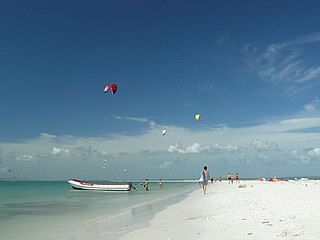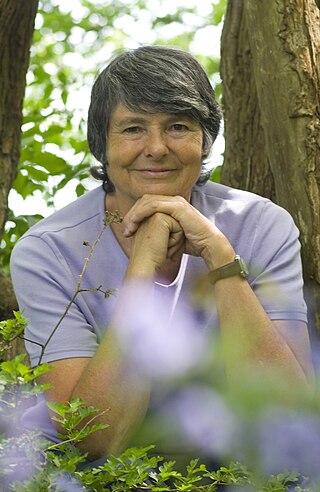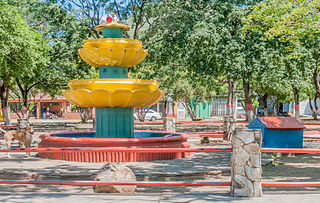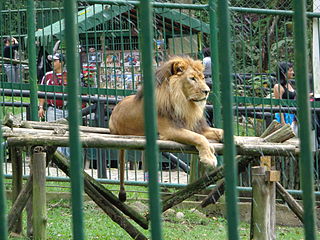
Isla de Coche is one of three islands forming the Nueva Esparta State of Venezuela, located in the Caribbean between Isla Margarita and the mainland. The other two islands are Isla Margarita, the main island of the state, and Cubagua, the smallest. Coche is coterminous with the municipality of Villalba, with the municipal seat at San Pedro de Coche, the largest town. Moreover, Coche Island has continued to sustain the fishing tradition.

Hilary Bradt MBE is the founder of Bradt Travel Guides, a publisher which became an increasingly visible presence in the travel guide book world starting in the mid-1970s.

The Caracas Cathedral or Metropolitan Cathedral of Saint Anne is the seat of the Roman Catholic Metropolitan archdiocese of Caracas, located on the Plaza Bolívar in Caracas, Venezuela. Its chapel of the Holy Trinity is the burial site of the parents and wife of Simón Bolívar. The Nuestra Senora de Venezuela y Santa Ana is a square (cuadra) situated between the cathedral and the central plaza, which is walled on three sides, but open to the east where it faces the cathedral.

Salanoia is a genus of euplerid carnivoran with two currently described species found in Madagascar. They are mongoose-like, which is reflected in the older versions of their English names, for example brown-tailed mongoose which is now called brown-tailed vontsira. The name Salanoia is derived from salano, one of the vernacular names for Salanoia concolor.

The Aroa River is a river in northwestern Venezuela. It runs parallel and west of the Yaracuy River. The Aroa River empties into the Caribbean Sea.

Bradt Travel Guides is a publisher of travel guides founded in 1974 by Hilary Bradt and her husband George, who co-wrote the first Bradt Guide on a river barge on a tributary of the Amazon.
Surama is an Amerindian village in the North Rupununi area and the Upper Takutu-Upper Essequibo Region of Guyana, with a population of 274 people as of 2012.

El Playón is a tourist town in the state of Portuguesa, Venezuela. It is the shire town of Santa Rosalía Municipality. Its official name is Independencia, in honour of Francisco de Miranda's 1806 landing in a prelude to the Venezuelan War of Independence.
Katara is a spicy sauce typically made in the Venezuelan Amazon. It is made by the indigenous peoples of the area with chili peppers and fermented bachaco ants bottom. Katara tastes both sour and spicy.

Los Aleros is a theme park located near Mérida, Venezuela. It depicts a typical Andean town in the 1930s. It was created by Alexis Montilla in 1984; he subsequently created the nearby "Venezuela de Antier" and "Montaña de los Sueños" themeparks.

The Birthplace of Simón Bolívar is a seventeenth-century house in the Venezuelan capital city Caracas where the hero of Venezuelan and Latin American independence, Simón Bolívar, was born. Now a significant tourist attraction, the building is located in a little street off the Plaza San Jacinto, a block east of the Plaza Bolívar. It is one of only a few houses from the colonial era which survive in central Caracas.

Francisco Esteban Gómez was a Venezuelan military officer who was active in the Venezuelan War of Independence. Known as the “patriot commander” of Margarita Island, he was noted for his participation in the defense of the island against invading Spanish forces. In particular, he is honored today as the hero of the Battle of Matasiete (1817).

The Palacio Municipal de Caracas, or Consejo Municipal de Caracas, is the city hall of Caracas, Venezuela. It is located on the corner of Gradillas a Monjas opposite the Plaza Bolívar, occupying half of the plaza's southern section. The building dates from the seventeenth century but now bears the mark of Alejandro Chataing's Neoclassical additions in 1906. It was the focal point for the Constitutional Convention, and signing of the Declaration of Independence in the nineteenth century. The present building is the result of the work undertaken by the Venezuelan architect Alejandro Chataing in 1906. The west wing of the building, the Capilla de Santa Rosa de Lima, the chapel where Venezuela's independence was declared in 1811, has been fully restored and furnished with authentic period pieces. The ground floor houses the Museo Caracas, which contains works by Venezuela's most celebrated painters and many other historic artifacts. It was declared a National Historic Landmark on 16 February 1979.

Santa Ana is a town on Isla Margarita, in the state of Nueva Esparta, Venezuela. It is the capital of the Gómez municipality. The town is located in the south of the municipality, in the northeast of Margarita.

The Palacio de las Academias is a Neo-Gothic building on the Avenida Universidad in the centre of Caracas, Venezuela. It dates back to 1684 when a Franciscan convent was built on the site but in the 19th century it served as a barracks, a hospital and a college. In 1876, under President Antonio Guzmán Blanco, the Universidad de Caracas was moved to the building, whose former colonial façade was rebuilt in the Neo-Gothic style. After the university relocated to a new campus in 1952, the building became home to the National Academies. In 1965, it was listed as a national monument. The Palacio de las Academias now houses six National Academies, which are the National Academy of History, the Venezuelan Academy of Language, the Academy of Medicine, the Academy of Political and Social Sciences, the Academy of Jurisprudence, and the Academy of Physics, Mathematics and Nature.

The St. Peter and St. Paul Cathedral or just Maracaibo Cathedral is the main church of Maracaibo in the Zulia state of Venezuela. It was built in the seventeenth century. Pope Leo XIII designated it as a cathedral on 25 July 1897 and together with the Archbishop's Palace, is the seat of the Roman Catholic Archdiocese of Maracaibo.

The St. Philip the Apostle Cathedral, also known as San Felipe Cathedral is a religious building belonging to the Catholic Church and is located on 7th Avenue between Caracas Avenue and 9 Street, in the city of San Felipe, in the municipality of San Felipe, the capital of Yaracuy State in the Central-Western Region of South American country of Venezuela.

Aroa is the capital of the municipality of Bolívar in the state of Yaracuy, Venezuela. It grew up to serve the Aroa copper mines, now defunct.

The Yurubí National Park is a protected area with the status of national park in the north of the South American country of Venezuela. It was founded on March 18, 1960 in Yaracuy State created to protect the Yurubí river basin, which is the source of fresh water for the city of San Felipe. The Yurubí National Park is located in the mountains of the Sierra de Aroa. The park includes cloud forests and low montane forests and is surrounded by cultivated areas. The park is crossed by small trails, which are used mainly by poachers or by a small number of visitors and researchers. The park is not inhabited; The former settlers of the area were relocated many years ago.

The Chorros de Milla Zoo also Zoological Park of Chorros de Milla, is an urban zoological garden located in the northeastern end of the city of Mérida, Venezuela with native species of the Andean region and Venezuela. The Mérida Zoo was built in 1958 and is open to the public Tuesday to Sunday from 8:00 a.m. to 6:00 p.m.





















